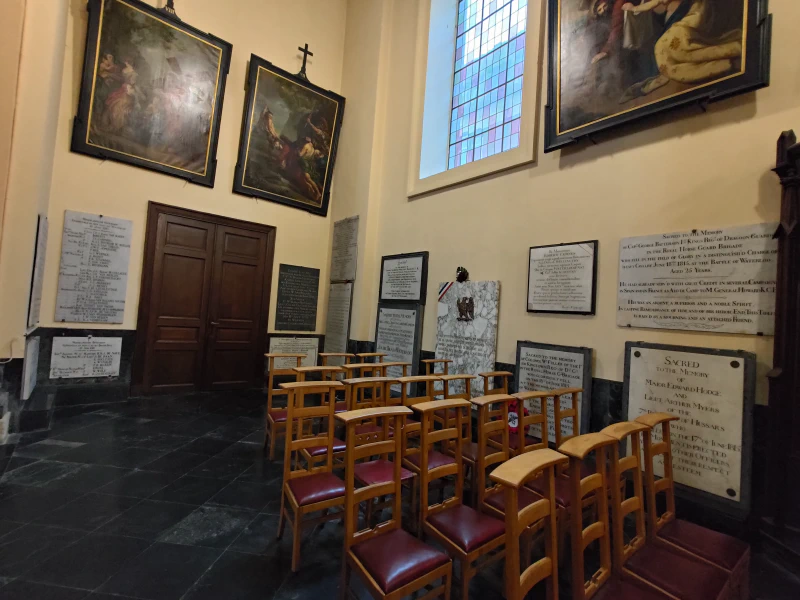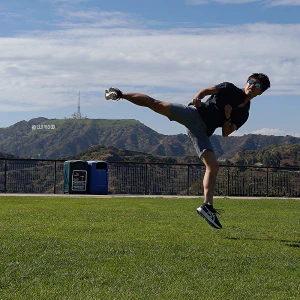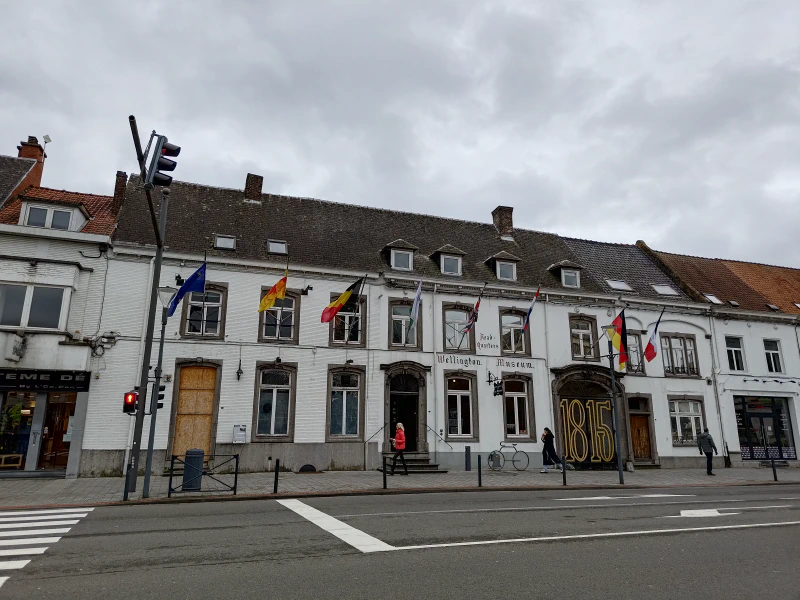Posted
on
in
Travel
• 925 words
• 5 minute read
Tags:
Waterloo, Belgium, Museum, Wellington, Napoleon, Battlefield
Today I went to Waterloo, the town which gave its name to the battle that saw Napoleon’s final defeat at the hands of the Seventh Coalition. Getting there was quite an adventure. To start, I woke up late again. After managing to get out of bed, I tried to take the tram over to a bus that went directly to the Waterloo city centre. I found the bus stop, and waited for a few minutes before the bus came, but then it just rolled right on past! I tried flagging it down, but it didn’t stop. So, I had to go with plan B which was to go over to Brussels Midi and take the regional train to Waterloo.
The Waterloo train station is a bit of a walk from the city centre, but it was a nice town to walk through. My destination was the Wellington Museum, located in the house which served as the headquarters of the Duke of Wellington during the battle. Across the street from the museum is a church. Inside there are many plaques commemorating various people who died during the battle.

After visiting the church, I went across the street to the Wellington Museum. As the name suggests, the museum focused on Arthur Wellesley, the 1st Duke of Wellington who commanded the troops of the United Kingdom. He, along with General Blücher in command of the Prussian army, defeated Napoleon during the fateful battle.
The displays had any artefacts of the Napoleonic wars, and many paintings and drawings of the Battle of Waterloo which happened on 15 June 1815. There was an audio guide which followed Wellington’s aide-de-camp who died during the battle. It talked about the return of Napoleon to the French throne, the subsequent mobilisation and declaration of war by the Seventh Coalition, and other events that led up to the battle.
Once a great strength of the French Grande Armée, intelligence on enemy movements caused Napoleon to have an incomplete understanding of the Coalition forces’ locations. Napoleon was attempting to face and defeat each army individually, as his strength was not sufficient to face a combined force in a pitched battle. He had previously defeated the Prussians at Ligny. During that battle, the 72-year-old General Blücher led a cavalry charge in-person and had his horse shot out from under him and was nearly captured. However, the Prussians managed to retreat in good order and Napoleon was unable to press his advantage. This would prove disastrous as the Prussians were able to regroup and arrive late in the afternoon of 15 June 1815 to the aid of Wellington.
On the other side, the British and Prussians were highly coordinated. The Prussians whereabouts were well-know to the British, and Wellington knew that if he could hold out until the Prussians arrived on the field, their combined force would win the day.
The battle began late in the morning due to wet terrain, and Wellington’s line held for hours. On the far right of Wellington’s line, the defenders of the fortified Hougoumont château were continually assaulted by the French throughout the day. Despite multiple attempts to take the house, it remained in British hands through the entire battle.
In the centre and right, the French saw their greatest success. After heavy bombardment, the infantry advanced but were stopped by decisive cavalry charge. After a costly failed cavalry counter charge by Marshal Ney towards the British centre, a coordinated French attack broke through the first line of defences and an artillery battery was brought forward. The artillery cut huge holes through the troops that were previously arrayed in infantry squares to defend against the cavalry attacks. The British centre was on the brink of collapse when finally, late in the afternoon, the Prussians arrived in force on the French right flank. Napoleon committed the rest of his reserves in an attempt to break through the British centre and cut the Coalition forces in half, but the combined force proved too great for the French. Retreat quickly turned to rout, and Napoleon was forced to flee the battlefield back to Paris.
As a history buff, I found the museum to be fascinating. The Napoleonic era is a period of history that I’m not very familiar with, but I am trying to learn more about it, as it was the precursor to so much of the modern European order. The battles of the period were some of the largest since the great battles of antiquity, and armies of that size would not be seen again until the First World War. The tactics and strategies influenced many of the subsequent conflicts including the American Civil War, and the tactics continue to be studied in the great military academies of the world.
Few men capture the collective mind like Napoleon. His military genius and bigger-than-life persona resulted in fame during his own day, and his wide-reaching socio-political influence is felt throughout all of Western Europe. Few figures in history have had as much of an impact as Napoleon.
The gift shop of the museum gave a stark reminder of this fact. In a museum dedicated to the memory of his defeat, you can find magnets with paintings of the Emperor, but there were no such souvenirs for the victors. Rare is the man who can loose a battle and then be the only one on the magnets in the gift shop of the museum commemorating his defeat.

